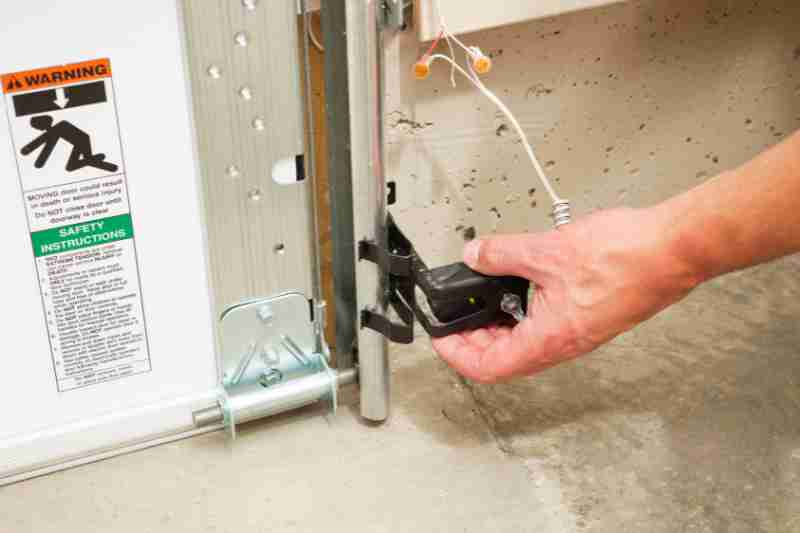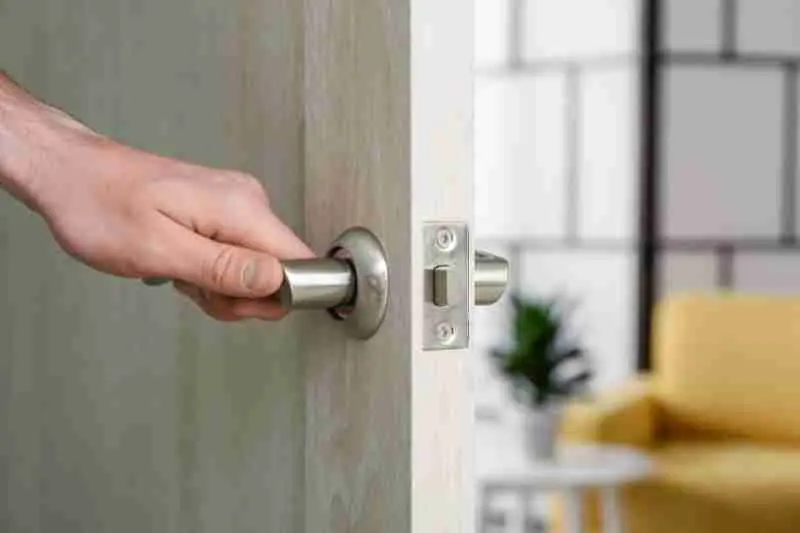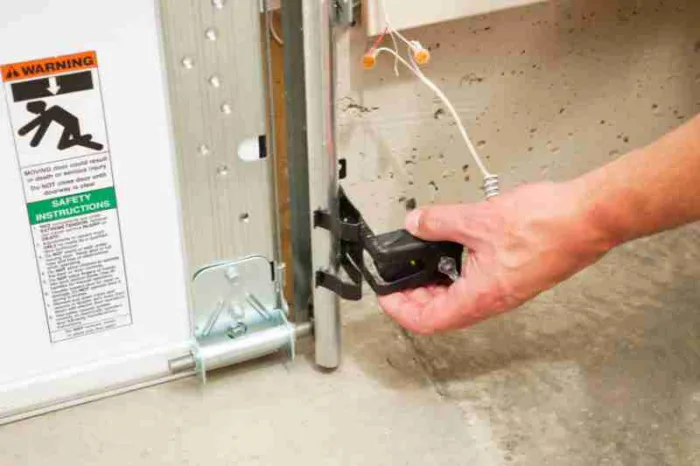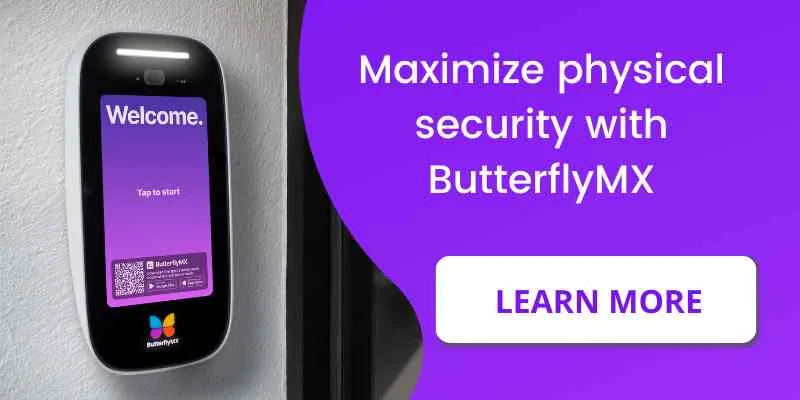Key takeaways
- A door contact helps you secure your property by alerting a central access control panel of the door’s open status.
- Mechanical door sensors send “closed” signals to the access panel when the door hits a button installed in the doorframe.
- When somebody opens the door, the button is released, and the sensor reports a change.
- Magnetic door alarm contacts work on the same principle, except they depend on a magnet installed on the door and a sensor installed on the doorframe.
- You can use door contacts to increase security on your property, set up entry delays, and guarantee safety in evacuations.

When you think of access control, hardware like intercoms, keypads, and building security systems might come to mind first. But there’s plenty of behind-the-scenes hardware that can benefit tenants, even if they don’t interact with them. Door contacts, which are a type of sensor that tells you if a door is open or not, are a prime example.
In this post, we explain what a door contact is and how they work. Then, we go over some ways you can use door contacts on your own property.
This post covers:
- What is a door contact?
- How do door contacts work?
- What are some ways to use door contacts?
- Door contact FAQs
What is a door contact?
A door contact is a type of sensor that lets you know in real-time if a door on your property is open or closed.
Door contacts are gaining popularity because the world of access control is becoming more tech-focused. These days, residents can use electronic keypads, card readers, intercoms, and more to unlock their doors — and door contacts integrate with those systems, adding functionality and increasing security.
The parts in a door contact system include:
- Access control panel. The access control panel serves as the brains of the entire system. When a door sensor reads that a door is open or closed, it sends those signals to a central computer that collects information from other door contacts and decides what to do with that information.
- Wiring. Copper wiring connects the door sensor to the access panel. However, recent innovations mean that you can also choose wireless door sensors that use Wi-Fi or high-frequency radio waves to connect to the access panel.
Keep in mind that door sensors have only one job: They let a central access control panel know if a door is open or closed. To actually lock and unlock the door itself, you also need to invest in an electronic lock that can be triggered from afar.
Watch how ButterflyMX works:
How do door contacts work?
Door contacts work by letting a central access control panel know if a certain door is open or not. This happens in one of two ways: A door sensor might use a magnetic sensor or a mechanical sensor to send signals to an access control panel.
What are the different types of door contacts?
There are two door sensor types:
1. Magnetic
A magnetic door contact has two components: a magnet installed on the door and a sensor installed on the doorframe.
The magnetic contact uses its magnetic field to interact with the sensor. When engaged, it reads “closed.” On the other hand, when somebody opens the door, the magnet moves out of the sensor’s range, and the sensor reports that the door is open.
2. Mechanical
Mechanical door sensors, also known as plunger switches, are named so because they depend on a plunger switch installed on the doorframe. When a door is closed, the plunger pushes into the switch mechanism, enabling the door sensor to report that the door is closed.
The plunger is released when somebody opens the door, and the sensor reports that the door is open.

What are some ways to use door contacts?
You and your staff can use door contacts for access control and security to help them stay alert to the status of an open door.
You can also use door sensors to:
1. Increase perimeter security
If a door opens during unauthorized hours, you can save time by setting your access panel to immediately call security or law enforcement instead of waiting for security guards to notice that something is amiss.
What’s more, door sensors can work in tandem with other hardware like cameras or IR sensors to fully secure your property.
2. Set up an entry delay period
Some properties have a lobby or vestibule that has two doors: one for entry and exit to the outside and the other that actually leads into the building.
For instance, when a resident buzzes in a guest, how can they be sure that both doors will unlock and that their guest won’t be trapped in the vestibule? That’s where a door sensor comes in.
Door sensors can help configure your access control system to automatically open one door if another opens. Alternatively, the second door can remain unlocked for a set period of time to allow a guest to cross from one end of the vestibule to the other.
3. Guarantee safety during evacuations
In the event of an emergency, you’ll be able to tell at a glance if there are any doorways that are obstructed or that are staying closed.
You can also set the entire system so that all doors unlock if people need to evacuate. This way, building residents won’t be impeded on their way out of the building.
Door contact FAQs
Here are the answers to your questions about door contacts and how they work:
- How close do door contacts need to be? When you’re talking about how close a door sensor needs to be to the sensor, the two can only be a half-inch apart. This is so the sensor can still pick up the fields from the magnet.
- Do door contacts need power? Yes, they do. You can connect a door sensor to your building’s wiring or use a wireless door contact that requires batteries.







